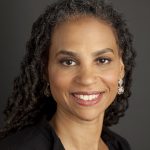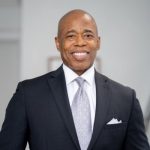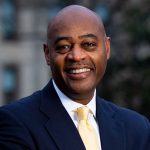What is your plan for achieving an educational system where all public school students are meeting or exceeding basic standards, regardless of race, income, or zip code?
Other In NYC, less than half of 3rd to 8th grade students are meeting proficiency standards on ELA or Math state exams. Rates are far lower for Black and Hispanic students.
 Dianne Morales
Dianne Morales
Every child deserves the opportunity to live up to their potential and choose their own path in life. Our children need equal access to excellent education. But this opportunity has not been equally secured for all. The biggest social issues and challenges we face as a city and country stretch back to the inequalities and injustices faced by children throughout their educational experiences.
Creating a more equitable school system is one of my top 3 priorities as Mayor and, in my first 100 days, I will execute an Educational Equity Executive Order to finally desegregate schools, eliminate disparities, and hold agencies accountable for inequitable educational outcomes. A primary part of eliminating disparities and increasing equity is addressing imbalances and injustices in school funding. Low-income and predominantly Black and brown schools need the most funding and, too often, they get the least. As Mayor, I will immediately direct my administration to examine disparities in funding, resources, and services in relation to demographics and socioeconomic status, so that we can quickly rectify those gaps and build a funding scheme that corrects these inequities in the long term. I will also marshal revenue streams, including rerouting funds from the NYPD, to fully fund the school capital plan to allow for the elimination of school overcrowding; for class size reduction; to eliminate all facilities to be free of mold, asbestos, and lead; and upgrade each building to be properly ventilated and accessible to students with disabilities. These issues are disproportionately present in Black and brown schools, and full funding is an important step in addressing these injustices.
Additionally, addressing the inequities in our school system necessarily means that it is time for a comprehensive citywide school integration involving zoning reform and open enrollment so that Black and brown kids do not have limited access to high quality schools in our city. This plan includes practical and immediate changes such as eliminating all admissions screening mechanisms at all levels, redrawing elementary school zones to maximize social and racial integration, replacing gifted and talented programs with school-wide enrichment programs, and working to improve and expand D15’s middle school integration plan. I will also be centering the voices of BIPOC parents and students in these conversations. It’s not enough to just shepherd Black and Brown students into white schools — it’s imperative to create an equitable framework where all schools are thriving and have diverse teachers with appropriate training, and that this movement is led by those directly impacted.
Read the Full Questionnaire
Dianne Morales Maya Wiley
Maya Wiley
As a civil rights lawyer and co-chair of the School Diversity Advisory Group (SDAG), my education platform pays particular attention to breaking down the structural inequities that unfairly sort and segregate our children, and contribute to different educational outcomes, determined by race and class. I will eliminate admissions policies that have segregated schools and limited access to resources for families across the city, such as using redlined district boundaries, discriminatory admissions screens, and overly complex and time-consuming application processes.
In place of our current system of discriminatory zoning and screening, a Wiley administration will build an inclusive, community-based approach to assigning children to our public schools. We will establish tight, achievable timeframes for these processes. As recommended by the SDAG, this integration planning will be borough rather than district-focused, and will be overseen by a Chief Integration and Equity Officer, to be hired within the first year of our administration. We will also break down walls between City agencies to ensure smart, coordinated planning to reduce mutually reinforcing patterns of residential and school segregation.
We will support all efforts to repeal the state law that requires the use of the Specialized High School Admissions Test, and immediately eliminate the use of this test in admissions to all schools not specifically named by the Hecht-Calandra act. We will immediately convene a commission of experts to determine an educationally appropriate and equitable replacement admissions process. We will also discontinue the use of other school admissions policies that exacerbate segregation, including all middle school screens, and an application process so difficult to navigate that many families do not participate at all.
In addition, with clear findings that teachers of color help close achievement gaps for students of color, a Wiley administration would increase efforts to draw diverse young people into the teaching profession by providing stipends while they study for certification, and covering the costs of certification exams. We would also continue to support and invest in the Teach NYC Career Training Program, which has been the largest single source of minority teachers since it began.
Read the Full Questionnaire
Maya Wiley Andrew Yang
Andrew Yang
While proficiency standards have long plagued NYC schools, the pandemic has exasperated the problem. High dosage tutoring has proven to be one of the most effective ways to help students catch up and achieve proficiency. President Biden’s stimulus package included $1 billion in new funding for AmeriCorps. As Mayor, I will capitalize on this funding by mobilizing 10,000 new tutors as part of a new initiative coordinated by the City and supported by business & philanthropy: The Big Apple Corps. Each tutor serving as part of the Big Apple Corps will work with 10 students, thereby reaching 100,000 of the most vulnerable children in the 5 boroughs starting with Title I schools through coordination with local non-profits who already serve our hardest-hit communities. My administration will tap proven providers of tutoring such as the Great Oaks Foundation, City Year and SAGA Education to provide high-quality tutoring to children in Math and English Language Arts.
Read the Full Questionnaire
Andrew Yang
Eric Adams
There are a few ways I would work towards creating a more equitable education system.
- Prioritize schools investment in low-performing communities
There are both tangible and psychological problems created for students by a poor physical educational environment—and student outcomes are clearly linked. That is why we will prioritize Department of Education schools capital dollars to go toward the construction of state-of-the-art buildings in particularly low-performing communities. Additionally, less than 20% of our schools are fully accessible to children with physical disabilities. All new construction would be fully accessible.
- Move to a full-year school year
Three hundred years ago, when children worked alongside their families on an agrarian calendar, it made sense to take a few months off a year to tend to the crops. Those days are long over. By moving to a full-year school year, we can much better utilize our education infrastructure by creating more flexibility for parents in how — and when — their child receives their education. This calendar change will also ensure our school buildings stay open year-round and can be utilized for day-long activities, including childcare, soft skills instruction and local programming. Learning during the summer months also does not need to be limited to the school buildings; it can be a time when teachers and students are encouraged to see the city as their laboratory, their theater, and their museum.
- Institute a robust program for culturally aware professional development
Nearly one-half of all New Yorkers speak a language other than English at home, and new New Yorkers from hundreds of different countries move here every year. Their kids may have very different cultural norms that affect how they learn and their ability to succeed in an American classroom. We will create a professional development program for educators to ensure they are culturally responsive to those students.
- Make dyslexia screening universal
Studies show that up to 30-40% of inmates in prisons are dyslexic, indicating that students whose learning challenges are not discovered are also not addressed, leading to avoidable negative outcomes. By making dyslexia screening universal in City schools, we will identify these challenges early and better ensure success for students.
Read the Full Questionnaire
Eric Adams
Shaun Donovan
The dual pandemics of COVID-19 and ongoing systemic racism exposed deep-rooted injustices in New York City’s education systems. They have also highlighted the strength and resilience of families, students, and educators to innovate and persevere through unprecedented times. As we work to recover from COVID-19, we must rebuild and reimagine our educational system, tackling long-standing inequities to create real pathways to economic opportunity for all public school students; valuing New York City’s diversity by creating integrated and inclusive opportunities for all students; and carefully rebuilding trust and partnering with families and educators to reimagine together. To do so will require us to draw not just on the traditional resources of our public schools but on all of New York City’s enormous assets, bringing all sectors to the table to support our children’s future: challenging our business leaders to help our students and schools recover, and define the needs of the future economy and ensure equitable access to relevant apprenticeships, jobs and internships that put every student on track to a family-sustaining job; better utilizing our cultural resources—our arts, our museums, our libraries, our parks—to enhance and extend the educational opportunities of our students, families, and educators; and improving coordination with nonprofit and community-based organizations that can better engage historically underserved communities, and nimbly address short-term recovery needs and long-term capacity challenges.
Prior to the pandemic, the public high school graduation rate in New York approached a historic 80%. And yet substantial gaps still existed, with students from low-income households, students of color, multilingual students, students in temporary housing, and students with disabilities too often left behind. At the college level, the CUNY system is a jewel that will be central to New York City’s recovery, and they have rightfully received national recognition for their groundbreaking work to improve completion rates. But there is work to be done to scale CUNY’s effective programs, improve completion rates and set students up for career success. At both the high school and college level, opportunity gaps mean that students from low income households and students of color complete their educations at lower than average rates and are less likely to enter family-sustaining careers.
We must have the vision to reimagine an educational system that values and supports the remarkable diversity of New York City’s students, families and educators, providing every student equitable access to critical resources and support structures they deserve. We must provide meaningful pathways within and beyond the classroom, birth through career, that open doors to economic opportunity. We must close longstanding resource and outcome gaps, provide safe, engaging, culturally responsive and inclusive learning environments, draw from both the innovations of New York City’s educators and existing evidence about what works, and prepare all of our city’s students for family-sustaining jobs for decades to come. And we must have the focus to carry that vision through and make it real.
Our plan will focus on:
- Repairing the Systemic Damage from COVID, while Tackling Pre-existing Inequities to Better Serve All Students
- Applying a System-wide Focus on Diversity, Integration and Inclusion for Students and Educators
- Reimagining Pathways from Birth through Post-secondary that Open Doors to Economic Opportunity
- Investing in New York City Libraries as Neighborhood Learning Assets
To read more, go here.
Read the Full Questionnaire
Shaun Donovan
Kathryn Garcia
My administration will implement childcare and early childhood education for all, with early intervention services integrated so that we can maximize literacy rates and ensure the best outcomes. We need structural change that will desegregate and incentivize better educational outcomes at every single school in the city, so that families feel confident that the closest school to their home will provide a quality education for their child.
First, I would accelerate our Universal Literacy goal to 2023. We can’t wait until after the end of my first administration to reach this goal; we know what works — equipping teachers with science-backed curricula based in phonics — to reach 100% of students reading on grade level by end of 2nd grade- when students start reading for information- by 2023.
At the middle school level, we will build new high schools in every borough for the top 10% of 8th graders, and ending screens on a district by district level in consultation with parents. At the high school level, we also need to reward schools that demonstrate progress with students entering at lower proficiency levels and ensure students at all high schools have access to rigorous and specialized courses taught by teachers that are strongest at online learning — one of the benefits of virtual learning that we can carry forward. At the elementary school level, we need to expand challenging offerings and enrichment opportunities at all schools and do a better job matching students of color with those opportunities.
Our education policy must be focused on rebuilding a more equitable city and preparing our kids to succeed in the 21st century economy with a focus on youth talent development. We would expand the summer youth employment program to include partnerships with the private sector, in particular those industries that make our City exceptional: finance, arts, technology, healthcare, film and media. In addition, we would create a pipeline from CUNY colleges and trade schools to jobs, including guaranteeing graduates of our trades schools City employment and work with the private sector to offer 10,000 paid internships to high school students. Finally, we will invest to place work-based learning coordinators at all high schools and subsidize wages for youth who face barriers to employment.
Read the Full Questionnaire
Kathryn Garcia Ray McGuire
Ray McGuire
My Cradle to Career plan ensures that young New Yorkers are supported across the continuum of their life. Too many kids are falling behind before they even get to pre-K, I will expand access to affordable, high-quality child care for infants and toddlers across the city to assure they enter ready to learn. I will launch Tutor NYC with 10,000 college students or recent graduates – a program that will jointly help schools make sure students are at their appropriate reading level and create pathways to opportunity for college-bound New Yorkers. Schools will be required to provide access to tutoring opportunities to families whose children are shown to be behind. I will hold myself accountable for ensuring that every child is able to make the transition from learning to read to reading to learn by 3rd grade. I will also ensure that in every neighborhood there is an excellent school to choose from by expanding choice for parents. Finally, and importantly, I will hold myself accountable for ensuring that a New York City schools’ diploma is not just a piece of paper by rethinking middle and high school, so that they serve as a pathway to college and a career.